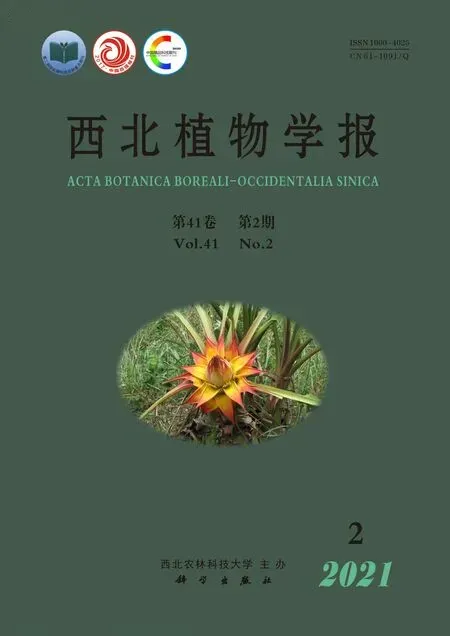Introduction of the Plant Front Cover: Musella lasiocarpa
Musellalasiocarpa(Fr.) C. Y. Wu ex H. W. Li,also known as “Thousand Petal Lotus” “Thousand leaf Lotus”,is a large perennial herb of Musa. Pseudostem formed by overlapping leaf sheaths in imbricate arrangement is 30-80 cm in height. Leaves are ovoid to oblong,50-110 cm in length and 30-50 cm in width. Rosette inflorescence grows erectly on pseudostem with flowering time from March to October. Bracts are yellow to orange-red,petal-like,layers from bottom to top,30-50 cm in diameter,bracts oval-shaped to oblong,13-20 cm in length,7-13 cm in width. Flowers grow at the base of the bracts,arranged in 1-2 rows with 2-4 flowers per row. Berry is triangulate ovate,3-5 cm long and about 3 cm in diameter. Each fruit contains 30-80 seeds with 6-7 mm wide,dark brown or brown,smooth,with a large white hilum on the ventral surface.Musellalasiocarpais endemic to China,and its wild populations are rare. It mainly distributes in cliff habitats ranging from 1 600 to 2 200 m in Yunnan and Sichuan. Plants and flowers have high ornamental value,and as one of the “Five Trees and Six Flowers” in Buddhism has been endowed with profound cultural connotation. Pseudostem is rich in starch and can be eaten and used as fodder. Flowers are nectar rich. Flowers and Leaves can be used as medicine which has the effect of astringent hemostasis,treating leucorrhea,red collapse and bleeding under the large intestine; The stem juice is used to alleviate the alcohol intoxication and to avoid kusnezoff monkshood poisoning.

